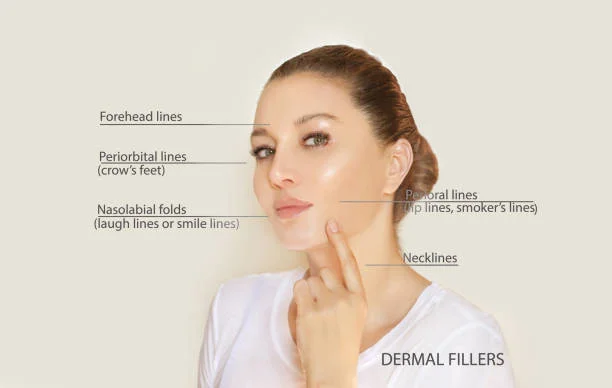How Injectable Science Changed Aesthetic Medicine
The art of aesthetic medicine has developed dramatically over the last two decades, and the most outstanding advancement has been in the development of dermal fillers. These treatments were limited to simple wrinkle diminution, whereas now they are advanced devices employed to restore form, volume, and balance to facial contours. The reason they are so well adopted is not just the cosmetic outcome but also the scientific expertise involved in each product.
Modern dermal fillers are crafted with meticulous care for human anatomy and cellular function. Unlike the first-generation products that used animal-derived collagen, the most recent products employ biocompatible materials, most commonly hyaluronic acid. This molecule is found naturally in the skin and connective tissue and binds to water, keeping the tissue hydrated and taut. As a person ages, the body produces less hyaluronic acid, creating wrinkles and sagging. By refilling it through controlled injections, physicians can revolumize in targeted areas and texture without surgery.
The second reason for their popularity is outcome predictability. The new generation fillers offer precise sculpting, allowing practitioners to correct loss of volume and asymmetries of contour. Each product is of varied density, elasticity, and long-term lifespan, so treatment can be varied to suit different regions of the face. A softer formula can be used for delicate lines around the mouth, while a denser formula can re-define along the jaw or cheekbone. That level of specificity is what sets professional filler treatments apart from momentary beauty creams.
The method of delivery is also more advanced. Advanced injection techniques minimize pain and downtime. Injections guided by ultrasound are even used in certain clinics to map out vessels on the face before injection to avoid complications. All of these have not only made fillers safer but also more consistent, which allows practitioners to work with precision and imagination.
The Science Behind Longevity and Safety
Perhaps the largest question people have about fillers is how long they last. How long they remain depends on several scientific factors, including molecular weight, cross-linking, and where they are placed. Hyaluronic acid fillers, for example, are cross-linked with technology that prevents immediate breakdown in the body. The higher the degree of cross-linking of the gel, the more resistant it is to enzymatic breakdown. This concept enables treatments to last anywhere from six months to two years.
Longevity, however, is only part of the equation. A successful treatment is one that is safe. Modern fillers are tested exhaustively before they end up in clinics. Manufacturers will check viscosity, elasticity, and purity to ensure that the material will perform predictably once it is injected. There is a balance sought between rigidity to give structure and softness to allow movement.
Hyaluronic acid’s compatibility with the human body also offers a sense of security. As it mimics naturally occurring tissue, there is almost no risk of an allergic reaction. Additionally, the fillers are reversible, if necessary, by an enzyme called hyaluronidase. This reversibility reassures both the patient and the physician, especially when handling delicate areas such as around the eyes or mouth.
Scientific advances have also defined the way in which fillers behave with the surrounding tissue. There are some that induce collagen development, enhancing skin texture with ongoing use. Others deal with the mere restoration of mechanical volume. These definitions continue to be honed through research, enabling practitioners to select the most appropriate for each individual’s requirements.
The products used today fall under rigorous regulatory oversight, and only licensed practitioners are allowed to utilize them. In this manner, the quality control extends all the way from the manufacturing to the application. Clinics invest heavily in compliance and education because precision of dosage and positioning is crucial both in aesthetics and safety. Such regulation and training measures are what have made fillers one of the most legitimate non-surgical procedures available.
Professional Approach to Safe Dermal Filler Treatments
The success of the filler treatment is as much a function of the practitioner’s ability as it is of the product. Choosing a trained medical professional ensures anatomy, dose, and depth of injection are carefully assessed. Best results derive from a conservative approach with the aim of balance and proportion, rather than excess volume.
Treatment begins with a consult. Medical history, allergies, and expectations are discussed at great length before any treatment is performed. A professional will examine facial structure, muscle movement, and skin elasticity to determine where loss of volume occurred and what product will be most suitable. By breaking the evaluation into these step-by-step points, practitioners are able to formulate individualized treatment plans that minimize risk.
Safety procedures are also the foundation of professional practice. Clinics take sterile conditions and disposable equipment to avert infection. The filler syringes are packaged in a manner that they are opened in the presence of the patient so that product integrity is maintained. Post-injection, patients are instructed on proper aftercare: avoiding the application of excess pressure on treated zones, not exercising for 24 hours, and the use of cold compresses to avoid swelling.
Quality products are also important. Clinics that source their products from genuine suppliers enjoy product purity and traceability. That is where medical suppliers that source quality dermal fillers step in by ensuring practitioners procure certified products. Counterfeit products have also been a common problem in unregulated markets, so purchasing through confirmed channels ensures patient safety and uniform results.
The patient-practitioner relationship does not end with the procedure. Post-procedure follow-up visits allow for assessment for symmetry and healing once swelling has resolved. This ongoing care ensures that the outcome will be natural and provides an opportunity to make any adjustments needed in a safe environment. Providers also educate patients on how fillers sit over time to help manage expectations and promote informed decision-making.
The rise in popularity of fillers has paralleled an increase in inadequately trained operators administering treatments outside of clinical settings. This has, unfortunately, led to avoidable complications. These occurrences serve as a testament to the need for certified medical providers as the cornerstones of high-quality and safe care. Their training allows them to recognize vascular structures, adapt technique according to facial anatomy, and respond quickly if a bad reaction is observed.
Confidence Based on Science and Experience
Popularity of dermal fillers extends far beyond vanity. Patients find these treatments restore confidence following weight loss, aging, or medical conditions that shift facial structure. The improvements, executed properly, look subtle yet profound. The science behind the fillers allows obvious change and natural harmony to coexist.
Technological innovation continues to push the field forward in this direction. Firms are developing hybrid fillers made of hyaluronic acid in combination with other biostimulatory molecules for longer-lasting effects. There is more emphasis being put on regenerative aesthetics as well, where fillers not only restore volume but trigger tissue repair. That shift comes with the overall goal of maintaining the long-term health of the skin, not just its look.
Another innovation is the move towards combined treatments. Treatments now combine fillers with energy-based technologies such as lasers or radiofrequency devices to address texture, tone, and volume simultaneously. This synergistic method provides structural support as well as surface-quality enhancement, which results in an integrated rejuvenation.
Patients are becoming better informed as well, and it is to the benefit of both. An educated patient understands that dermal fillers are medical treatments and not beauty accessories. With reasonable expectations and under the guidance of a physician, fillers can restore facial contours, hydrate, and leave an individual appearing well-rested.
The future of aesthetic medicine is going to be all about precision: less and less dosing, personalized placement, and evidence-based planning using digital imaging technology. Artificial intelligence is already being utilized to predict outcomes and guide practitioners towards symmetry. The more technology gets fused with clinical intuition, the safer and more advanced filler treatments will get.
Dermal fillers have come a long way from being a celebrity secret. They are now available, evidence-based, and medical-sound treatments that provide emotional as well as physical uplifts. The clinic-to-confidence journey is a testament to rigorous research as well as responsible professionalism. They both have redefined the role of modern aesthetics in adding confidence—each precise injection at a time.






